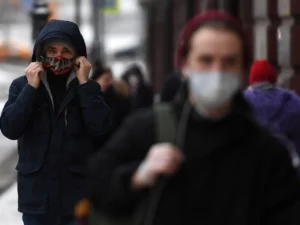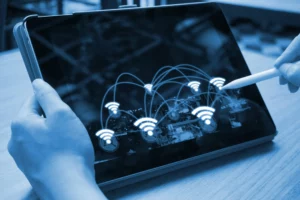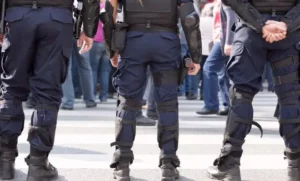In a rapidly changing world, personal security is an increasing concern. Whether you’re in a bustling city or a quiet town, understanding how to stay safe in public places is crucial. Let’s dive into actionable strategies that can enhance your security and help you stay safe, no matter where you are.
Be aware of your surroundings

One of the fundamental aspects of personal security is situational awareness. This concept involves being conscious of what’s happening around you at all times. According to a study from the U.S. Army Research Laboratory, situational awareness can dramatically reduce the risk of becoming a victim of crime:
- Observe your surroundings: Stay alert and keep an eye out for anything unusual. This doesn’t mean you need to be paranoid, but rather aware. For example, if you’re walking alone at night, pay attention to the people around you and the environment.
- Listen to your instincts: Our gut feelings can often alert us to danger before we consciously recognize it. If something feels “off,” it probably is.
Plan Ahead
Planning ahead can make all the difference when it comes to safety. This means understanding where you’re going, what you’re doing, and what potential risks may exist.
- Know your route: Whether you’re driving, walking, or taking public transit, knowing your route can keep you from winding up in an unsafe area. Use GPS or a mapping app to help you plan.
- Stay in well-lit, populated areas: Crime rates are typically lower in well-lit areas with lots of people around. If you can, stick to these areas, especially at night.
- Have an emergency plan: This could be a designated meeting place with your friends or family or a list of emergency numbers on your phone.
Use electronics with care

Technology is a double-edged sword. While it can provide us with many conveniences, it can also expose us to risks if we’re not careful.
- Don’t broadcast your location: Social media platforms like Instagram and Facebook allow users to share their location, which can be a security risk. Always avoid sharing it in real-time.
- Secure your devices: Use strong, unique passwords for your devices and all online accounts. Enable two-factor authentication where possible.
- Be wary of public Wi-Fi: public Wi-Fi networks are often unsecure, making it easier for cybercriminals to intercept your data. If you have to use public Wi-Fi, use a VPN to encrypt your data.
Learn basic self-defense
Self-defense isn’t just about physical fighting; it’s about using your mind and your body together to protect yourself. According to a 2005 study in the Journal of Interpersonal Violence, women who completed a self-defense training course felt they could more successfully thwart attacks and were less fearful in general.
Consider taking a self-defense class or learning some basic strategies:
- Use your voice loudly: Yelling or shouting can attract attention and possibly scare off an attacker.
- Know your body’s natural weapons: Your elbows, knees, and heels can be powerful weapons in a situation where you need to defend yourself.
- Understand escape techniques: learning how to break free from common grabs or holds can be incredibly useful.
Carry Personal Safety Items

Consider carrying personal safety items. These can provide an extra layer of protection and be used in a variety of situations.
- Personal alarms: These devices emit a loud noise when activated, drawing attention to you and potentially deterring an attacker.
- Pepper spray: This can incapacitate an attacker temporarily, providing you with crucial seconds to escape. It’s legal in most places, but always check your local laws.
- Flashlights: A small, powerful flashlight can be used to momentarily disorient an attacker and also helps in navigating dark areas.
Follow safe practices with strangers
In public places, you’re likely to encounter unfamiliar faces. While it’s essential to respect all individuals, maintaining a certain degree of caution is prudent.
- Avoid sharing personal information: sharing your home address, phone number, or other personal details with a stranger can expose you to potential risks.
- Maintain a safe distance: Keeping a comfortable distance from strangers can prevent unforeseen situations.
- Be cautious when accepting help: If you feel uncomfortable, it’s okay to decline offers of help.
Practice safe transportation

Whether you’re driving, taking public transit, or catching a rideshare, transportation safety is key.
- Stay alert at all times: Avoid distractions, such as using your phone, especially when walking or driving.
- Check the vehicle and driver: Before entering a rideshare vehicle, check the driver’s photo, name, and vehicle details to ensure they match what’s listed in the app.
- Wait for your ride indoors: If possible, stay inside until your ride arrives.
Stay updated and educated.
Knowledge is power, especially when it comes to personal safety:
- Stay informed about local crime trends: Many police departments offer crime mapping services, which allow you to understand what types of crimes are happening in your area.
- Attend community safety meetings: These can provide valuable insights into local issues and potential solutions.
- Learn first aid: In case of an emergency, knowing first aid can be life-saving.
Navigating through Crowded Places
Manoeuvring through a crowd requires certain skills and awareness to avoid potential threats.
- Move with the flow: Going against the crowd can make you more noticeable and vulnerable. Try to blend in by moving with the crowd.
- Keep your belongings secure: Crowded places are a pickpocket’s paradise. Keep your bag in front of you and ensure it’s fully closed.
- Avoid confrontation: In crowded places, tempers can flare quickly. Stay calm and avoid getting involved in arguments or fights.
Safeguarding children in public areas

If you’re a parent or guardian, child safety in public places is paramount.
- Teach your child about “stranger danger”: Make sure your child knows not to accept anything from strangers or go anywhere with them.
- Keep them in sight: Always keep your children within your sight, especially in crowded places.
- Have a plan if you get separated: Teach your child to find a trusted adult, like a police officer or store employee, and tell them they’re lost.
Final Thoughts
Being in public places is integral to our daily lives, yet they come with inherent risks. However, you shouldn’t let this deter you from engaging with the world around you. By understanding these risks and implementing the strategies outlined in this article, you can significantly increase your safety and security.
From situational awareness to safeguarding your personal property, each step you take contributes to a safer experience. It’s important to remember that safety is not just about reacting to immediate threats but also involves proactive planning and consistent practices. These habits, once cultivated, can become second nature, allowing you to navigate public spaces with ease and confidence.
Additionally, remember that personal security is a shared responsibility. By taking care of your safety, you contribute to the overall security of your community. Encourage your friends and family to adopt these practices, too. After all, a safer community begins with individuals making safety a priority.

